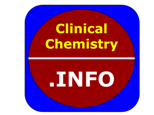Clin Chem Lab Med. 2025 May 1. doi: 10.1515/cclm-2025-0352. Online ahead of print.
ABSTRACT
OBJECTIVES: In serum immunofixation electrophoresis, therapeutic monoclonal antibodies (tmAbs) can be misinterpreted as paraproteins. Strategies to circumvent these interferences include the use of anti-tmAb antibodies, which led to the development of the Hydrashift assay. However, this assay is exclusively available for the Sebia platform and limited to specific tmAbs, such as daratumumab (DmAb) and isatuximab (ImAb). Furthermore, we observed some cases in which complete shifting of tmAbs by the Hydrashift Assay was questionable. This study aimed to explore isoelectric focusing (IEF) as an alternative, widely applicable method for clinical laboratories.
METHODS: First, the neutralization capacity of the DmAb and ImAb Hydrashift assay was assessed by testing undiluted tmAb samples. Second, DmAb and ImAb were spiked into paraprotein-containing samples in clinically relevant concentrations and analyzed by the Hydrashift assay and IEF. Presence of unshifted tmAb and identification of tmAb and paraproteins were examined in these samples and routinely collected patient samples.
RESULTS: The Hydrashift assay reliably shifted up to 0.5 g/L DmAb and up to 1.5 g/L ImAb. IEF was found to be equally effective as the Hydrashift assay in identifying antibody interferences and detecting paraproteins. Additionally, IEF successfully identified two pseudo-monoclonal gammopathies as oligoclonal and detected other therapeutic antibodies.
CONCLUSIONS: Insufficient neutralization capacity of the Hydrashift Assay was not observed within the clinically relevant range of investigated tmAb concentrations. IEF offers a simple and flexible alternative to the Hydrashift assay for distinguishing tmAbs from paraproteins. Its advantages include broader applicability to various tmAbs and independency from specific commercial platforms.
PMID:40305408 | DOI:10.1515/cclm-2025-0352
